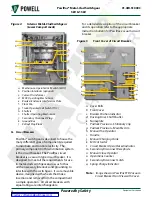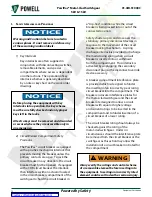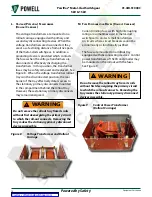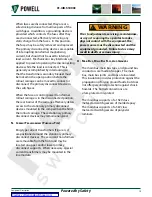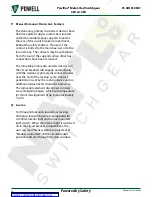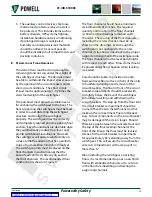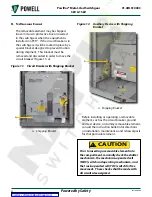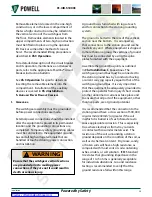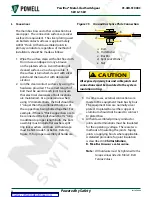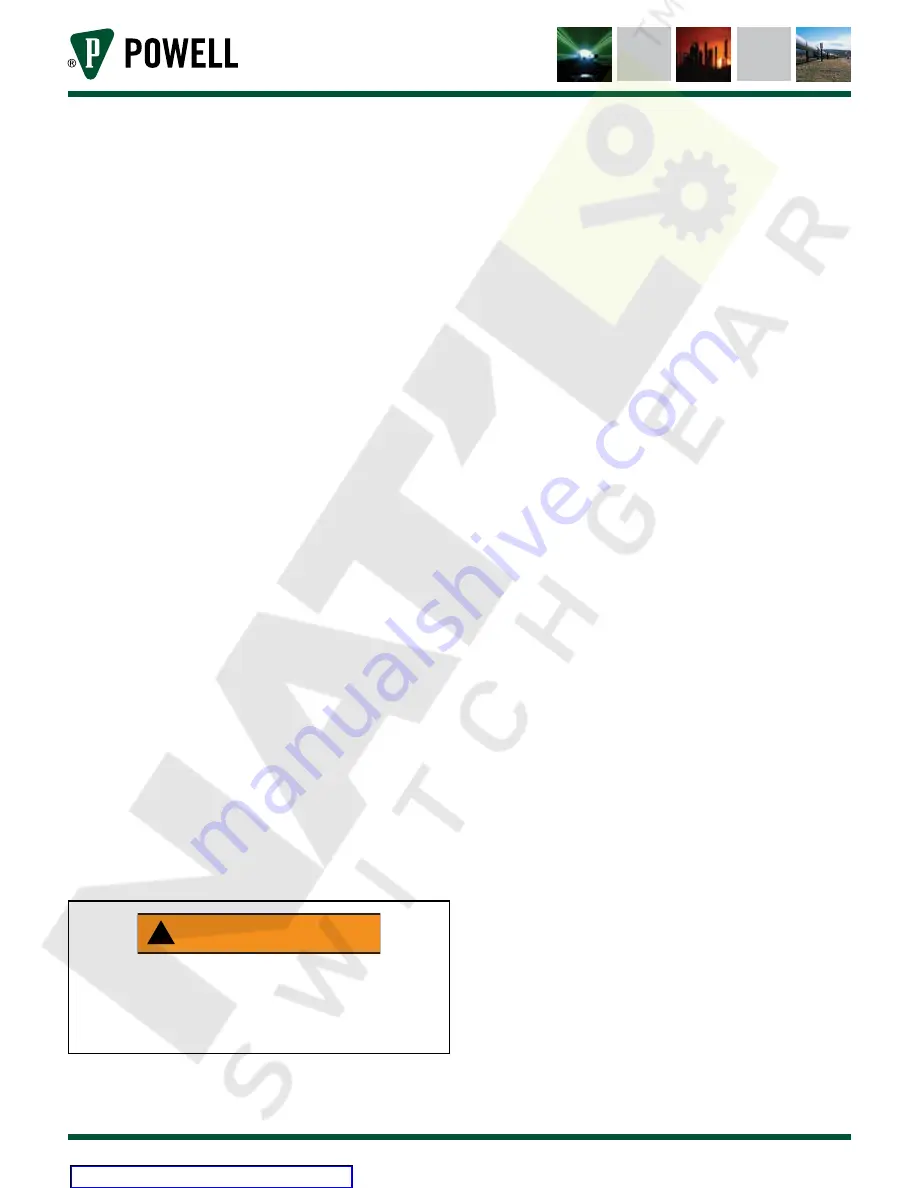
Powered by Safety
®
23
Installation
01.4IB.51000C
Removable elements located in the one-high
construction, or in the lower compartment of
the two-high construction may be rolled into
the vertical section of the switchgear from
the floor. Removable elements located in the
upper compartments of two-high construction
must be lifted into place using the optional
lift truck or some other method of crane or
hoist. The recommended lifting procedure is
described in
For a detailed description of the circuit breaker
and its operation, maintenance, and renewal
parts, refer to the appropriate PowlVac
®
circuit
breaker instruction bulletin.
See
for specific details on
inserting the removable element into the
compartment. Installation of the auxiliary
devices is covered in
I. G
rounDInG
The switchgear assembly must be grounded
before power connections are made.
External power connections should be installed
after the equipment is placed in its permanent
location and the grounding connections are
completed. Temporary safety grounding cables
must be connected to the equipment ground
bus and all high voltage terminals that are
handled or touched during power connection
and installation.
!
WARNING
Ensure that the switchgear vertical sections
are grounded prior to making power
connections, if they are not it could result in
death or serious injury.
A ground bus is furnished with lugs at each
end for connection to the station grounding
system.
The ground is bolted to the rear of the vertical
section near the bottom. It is arranged so
that connections to the station ground can be
made in any unit. Where equipment is shipped
in more than one group, the sections of ground
bus must be connected by using the splice
plates furnished with the equipment.
Assemble the ground bus joints as outlined
. The
switchgear ground bus must be connected to
the station ground bus by a conductor having
a current carrying capacity equal to that of the
switchgear ground bus. It is very important
that the equipment be adequately grounded to
protect the operator from injury if short circuits
or other abnormal occurrences take place and
to ensure that all parts of the equipment, other
than live parts, are at ground potential.
It is recommended that the connection to the
station ground have a cross section of 500,000
circular mils (240mm
2
) or greater if the soil
in which it is buried is of such character as to
cause appreciable corrosion. This is especially
true where electrolysis from stray currents
or contact with dissimilar metals exist. The
resistance of the soil surrounding a station
ground depends on the condition of the soil, as
well as its chemical content. Dry, loose, sandy,
or frozen soils will have a high resistance as
compared with moist soils or soils containing
ashes, cinders, or salt solution. IEEE Standard
142 states that grounding impedance in the
range of 1 to 5 ohms is generally acceptable
for industrial substations. Ground resistance
testing is recommended to verify that the
ground resistance falls within this range.


